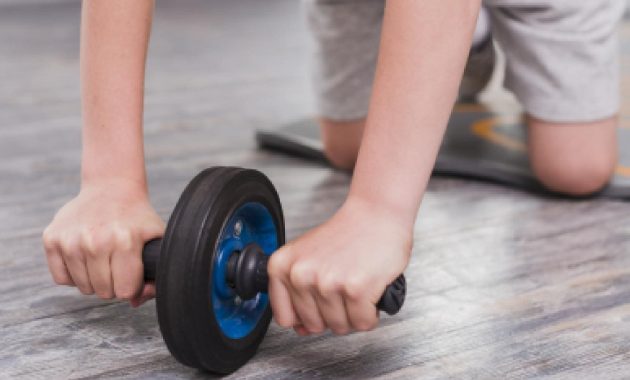Weightlifting is a healthy form of exercising. But can children lift weights? Know the best age to start lifting weights.
Exercise is good for kids! Kids who exercise are fitter and stronger, and less likely to be overweight or obese. In fact, exercise for kids is good for their mental and physical health. While there are strength training exercises like pushups and lunges that can be done only with your body weight, you need weights to tone your body and build lean muscle mass. Strength training, with or without weights, may be popular among adults. But you may have doubts if you are thinking about your kid starting a strength training programme. You may wonder if lifting weights will stunt your child’s growth or not. Do you have to wait for your child to turn 18 to start lifting weights? Let’s find out the right age to start lifting weights.
What is the right age to lift weights?
Bodyweight exercises, and lifting weights are two popular types of strength training. There is no minimal age requirement for participation in a strength training programme. But children must be able to follow directions and show adequate balance and have a sense of self-movement, which generally happens by 7 or 8 years of age, as per research published in the journal Sports Health in 2009.

Preadolescents (those aged between 9 and 12) should avoid weight lifting, and body building until they reach physical and skeletal maturity, according to the American Academy of Pediatrics. “In most cases, the right age to start lifting weights is around 13 years,” says physiotherapist and fitness expert Dr Aijaz Ashai. By this age, most children would have developed sufficient physical coordination, muscle control, and even maturity to handle strength training.
Children less than 10 years old should not be included in formal weightlifting programmes. “At this age, their bodies will not be developed enough; they would not have enough coordination and bone strength to lift weights and avoid injury,” says the expert. Bodyweight exercises such as squats and pushups or swimming are appropriate for strengthening the body without overworking the developing muscles and bones.
You may also like


Can lifting weights stunt a child’s growth?
A common myth surrounding kids and weightlifting involves the notion that it will affect a child’s height by damaging their growth plates, which are the areas of new bone growth. When youngsters reach physical maturity, the growth plates turn into hard bones. They are softer during a child’s development and are more susceptible to damage. However, properly designed strength training programmes have no negative effects on growth plate health, according to the American Academy of Pediatrics.
“If right supervision and programme design are given importance then weightlifting will not affect the height of a child. In fact, safe strength training with proper form helps promote healthy bones,” says Dr Ashai.
But there may be some side effects of children lifting weights –
- When young children perform a lift by carrying more or less than their body weight, they may get injuries in the form of muscle or tendon injuries.
- Doing too much weightlifting without giving time for recovery causes overuse injuries such as tendonitis or stress fractures.
- Loading children too much with weightlifting or exercise eventually leads to burnout and stress, giving them the point of hate for any form of physical activity.
- Without proper training, kids would lift the weights with poor techniques and eventually develop posture, muscle imbalance, and chronic musculoskeletal issues in the future.
What are the benefits of lifting weights?
If done correctly, training with weights not only increases the muscular strength, but also provides the following benefits:
- Weight-bearing exercises boost the density of the bones.
- Weight training helps burn calories in a more efficient manner by boosting muscular mass, and by that improving metabolism.
- Stronger muscles, specifically the back and the core, improve posture.

How to start lifting weights?
Once your child reaches the right age, he or she needs to first prioritise proper form and technique over heavy weightlifting. A good starting point would be to start with bodyweight exercises such as squats, lunges or pushups, or with very light weights.
Safety precautions include the following:
- It’s a must for your child to perform a 5 to 10-minute warm-up before any activity to prepare the muscles.
- Make them focus on proper form, and use light weights.
- Once they feel they can do 10 repetitions without working too hard, they can increase the weight very gradually.
- Like adults, children also need to rest for at least one full day between working out each muscle group such as the back, legs, hips, abdomen, and chest.
- A coach or fitness trainer, who has worked with youngsters to strength train, needs to supervise the sessions to ensure the child maintains proper technique.
- Talk to your doctor before letting your kid start a strength training programme, especially if they have medical conditions such as heart problems, and uncontrolled high blood pressure.
If your child loves sports, they may even be interested in strength training, especially lifting weights. But remind them that strength training is not for having big muscles, but to increase strength and endurance. Supervision is important, so take help of a qualified trainer to avoid any injuries.
#age #start #lifting #weights
